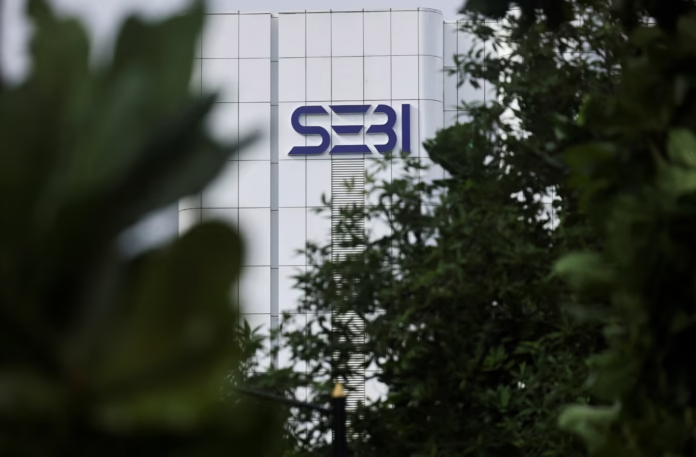India’s Securities and Exchange Board (SEBI) is taking bold steps to simplify regulations for foreign investors, aiming to attract long-term capital inflows and bolster the nation’s position as a global investment hub. Announced in its annual report on August 12, 2025, SEBI’s initiatives include a proposed single-window clearance system, streamlined compliance for low-risk investors, and enhanced cybersecurity measures to ensure market integrity. These reforms align with India’s broader economic goals, including the Atmanirbhar Bharat initiative, which seeks to balance self-reliance with global collaboration. As India navigates a complex geopolitical landscape, including recent US tariff hikes, SEBI’s efforts signal a strategic push to diversify investment sources and strengthen economic resilience. This article explores SEBI’s regulatory reforms, their implications for foreign investors, and their role in shaping India’s financial future.
SEBI’s Regulatory Reforms: A Gateway for Foreign Capital
On August 12, 2025, SEBI outlined plans to further ease regulations for foreign investors, building on a proposal from the previous week for a single-window clearance system. This system targets low-risk overseas investors, including government-owned investment firms, sovereign wealth funds, and pooled retail funds, granting them seamless access to India’s securities markets. The initiative aims to reduce bureaucratic hurdles, encouraging greater foreign participation in a market projected to grow significantly, with the BSE Sensex nearing 100,000 points by mid-2025.
SEBI’s annual report also detailed a comprehensive review to rationalize existing regulations, focusing on eliminating redundancies and simplifying compliance. Earlier in August, SEBI proposed relaxed disclosure norms and shareholder approval requirements for low-value transactions between related parties, further easing the compliance burden. These measures are designed to make India’s markets more attractive to foreign portfolio investors (FPIs) and specialized investment funds (SIFs), which can now explore a broader range of equity, debt, and hybrid strategies with a minimum investment of ₹10 lakh.
Additionally, SEBI plans to simplify the offer document preparation process by introducing a template-based approach, reducing the complexity of disclosures for public and rights issues. This move addresses the challenge of lengthy, repetitive offer documents, making it easier for issuers and investors alike.
Strengthening Market Oversight and Cybersecurity
While easing access for foreign investors, SEBI is simultaneously tightening market oversight to ensure stability and transparency. The regulator is enhancing its cybersecurity infrastructure to detect and prevent trading anomalies, following high-profile cases like the ban on US firm Jane Street for alleged stock index manipulation. SEBI Chairman Tuhin Kanta Pandey emphasized increased surveillance of derivatives trading, noting that 90% of index options trading occurs on expiry day, with 30% in the final hour, raising concerns about volatility and potential manipulation.
SEBI’s proposed framework for algorithmic and proprietary trading aims to integrate these activities into core stockbroker regulations, replacing broad guidelines with clear rules. The regulator also suggested requiring stockbroking firms to have at least one director residing in India for over 182 days annually and developing an online system to monitor trading terminals and prevent unauthorized trades. These measures, coupled with the “SEBI E-Drive” initiative for cloud-based inspection data sharing, reflect a commitment to robust market governance.
Economic Context: Balancing Global and Domestic Interests
SEBI’s reforms come at a critical juncture, as India faces external pressures from US tariff hikes imposed on August 6, 2025, which raised duties on Indian goods to 50%, threatening $87 billion in exports, particularly in textiles, gems, leather, and auto components. The $45.7 billion India-US trade deficit and India’s $18.8 billion monthly trade gap as of June 2025 underscore the need for diversified investment sources. By easing regulations for FPIs, SEBI aims to attract capital from Europe, the Middle East, and Asia, reducing reliance on US markets and aligning with the Atmanirbhar Bharat initiative’s focus on economic sovereignty.
Posts on X reflect positive sentiment, with users noting that streamlined regulations and single-window clearance could boost institutional and sovereign capital inflows, enhancing market liquidity and depth. This aligns with SEBI’s goal of fostering long-term investment to support India’s projected 7.2% GDP growth in 2025–26.
Implications for Foreign Investors and Indian Markets
The proposed reforms offer significant benefits for foreign investors:
-
Simplified Access: The single-window clearance system reduces entry barriers for low-risk investors, making India’s markets more competitive against regional hubs like Singapore and Hong Kong.
-
Expanded Investment Options: Relaxed FPI and SIF frameworks allow investors to explore diverse strategies, from equity to hybrid funds, tapping into India’s growing financial sector.
-
Reduced Compliance Costs: Streamlined disclosures and regulatory redundancies lower operational costs, encouraging sustained investment.
For Indian markets, these reforms promise increased foreign participation, boosting liquidity and supporting infrastructure projects critical to India’s $5 trillion economy goal by 2027. However, SEBI must balance accessibility with oversight to prevent market manipulation, as seen in the Jane Street case, and maintain investor confidence amidst global uncertainties.
Challenges and Opportunities
While SEBI’s initiatives are promising, challenges remain. The recent US tariff hikes could deter foreign investors wary of India’s trade tensions, with $15 billion in foreign investment outflows already recorded in 2025. Ensuring robust cybersecurity and transparent regulations will be critical to maintaining trust. Additionally, SEBI’s focus on algorithmic trading oversight must avoid stifling innovation, particularly for tech-driven startups contributing to India’s digital economy.
Opportunities abound, however. The India-UK Free Trade Agreement, finalized on July 24, 2025, complements SEBI’s efforts by facilitating investment flows, as seen in Mahindra’s EV export plans. Collaborating with global regulators to align standards could further position India as a preferred investment destination. SEBI’s engagement with FPIs, as emphasized by Chairman Pandey, signals openness to feedback, fostering a collaborative environment.



